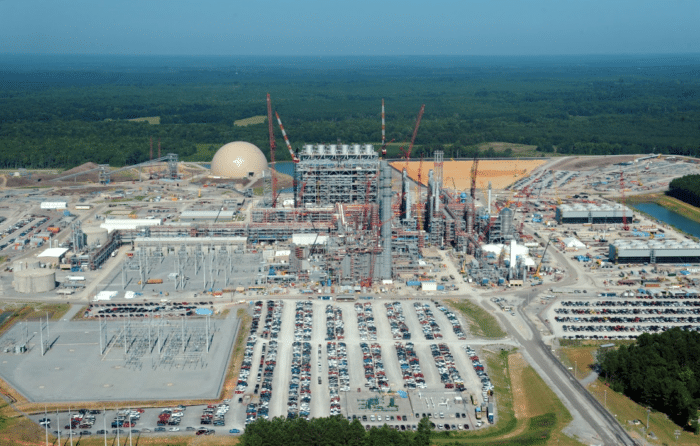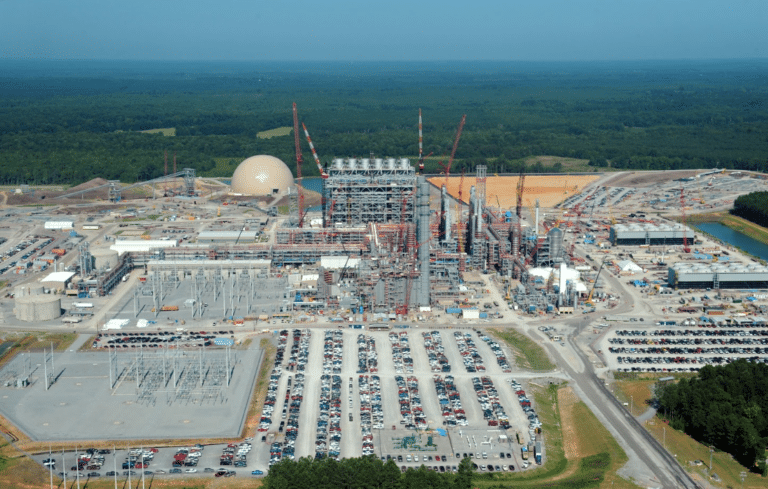 Bioenergy with Carbon Capture and Storage (BECCS) was granted a huge boost of support by the IPCC’s “mitigation” Working Group in their 5th Assessment Report. Since then growing attention has been given to this technofix as the main approach to removing CO2 from the overloaded atmosphere. This is in spite of the fact that there are currently no operating commercial-scale BECCS projects*, and there is ongoing serious debate over the climate and other impacts of all large scale bioenergy. There are also serious concerns about costs, feasibility and safety of underground storage.
Bioenergy with Carbon Capture and Storage (BECCS) was granted a huge boost of support by the IPCC’s “mitigation” Working Group in their 5th Assessment Report. Since then growing attention has been given to this technofix as the main approach to removing CO2 from the overloaded atmosphere. This is in spite of the fact that there are currently no operating commercial-scale BECCS projects*, and there is ongoing serious debate over the climate and other impacts of all large scale bioenergy. There are also serious concerns about costs, feasibility and safety of underground storage.
Perhaps the best indication we have for the feasibility of large scale BECCS, which the IPCC is relying on to avoid catastrophic climate change, is the current generation of coal CCS projects. These have been under development for many years under the popular guise of “clean coal”.
On 5th July the New York Times provided a disturbing evaluation of the Kemper “clean coal” plant in Mississippi, USA, a hugely over-hyped and over-priced energy project that industry and policy-makers claim to be a solution to climate change, despite mountains of evidence that it is only making matters worse.
Kemper is one of several such projects. SaskPower’s Boundary Dam facility in Saskatchewan, Canada, is supposedly the first commercial-scale coal CCS plant in the world. It sends some CO2 to an oil field, which is then used to pump out otherwise inaccessible oil reserves, called “enhanced oil recovery”. They are actually paying fines to the oil company for failing to deliver the contracted amount of CO2. How this project is billed as a “solution” to climate change is baffling.
FutureGen in the USA is another project – an integrated gasification combined cycle (IGCC) coal power station with CCS that collapsed after over $175 million had been spent. Then came FutureGen 2.0, a scheme to retrofit an old coal plant like the Boundary Dam with CCS, which suffered the same fate after over $200 million of public money had been spent.
Then there is the White Rose project in the UK. It would have been the first new coal plant to be built in the UK since the 70’s, coming right at the time when coal is supposedly being phased out. Developers went even further in their rhetoric, saying that this would be the first “negative emissions” plant in the world, since it would burn some biomass in the mix. The argument is that all bioenergy is “carbon neutral”, so capturing the CO2 would render it “carbon negative”. Yet the project was to source coal from mines in Colombia and Russia that have resulted in violent conflict with communities, and wood from the Southern US, where the world’s most biodiverse temperate wetland forests are being felled and turned into wood pellets. Coal mining and deforestation cannot be “solutions” to climate change. Thankfully the project collapsed, after millions had been spent on feasibility studies.
Billions in public funds are being spent on these horrendously misguided projects, money that could be allocated instead to genuine attempts to reduce emissions and restore ecosystems. These projects are giant infrastructure projects that are pitched as progressive and innovative solutions to climate crisis, but in reality are a part of the problem, and always result in more damage and emissions once you peel back the greenwash.
Applying CCS to coal plants is simply a desperate attempt to throw a lifeline to an industry that should have been ended years ago. But the impacts of coal mining, the fact that mining itself is inherently polluting and destructive, and invariably results in harm to the communities near to it or displaced for it, is never a consideration.
The Kemper “clean coal” plant must now take first prize as the biggest failure of these projects. Regardless of whether it is ever finished and operates satisfactorily, it has failed before ever being switched on. The New York Times’ detailed and shocking article lays bare the level of corporate wheeling and dealing at Kemper. The article is based of the account of a whistle-blower, who is a former employee at the plant. We really recommend that this article is read.
The massive failure of “clean coal” projects like Kemper and the others described above are a clear warning for the future of BECCS. BECCS is touted as a means of delivering negative emissions based on entirely faulty carbon accounting that assumes all bioenergy – even cutting down forests to burn in coal plants – is “carbon neutral”, and that capturing the carbon will miraculously result in the removal of CO2 from the atmosphere. BECCS has long been discussed in climate geoengineering debates, where it is presented as one of the more “benign” or “soft” approaches to tweaking the climate (at least in comparison to spewing sulphate particles into the stratosphere, or dumping iron into the ocean).
Now climate scientists within the IPCC Working Group 3, largely dominated by economists rather than experts on energy technologies or ecology, have promoted the whole concept of BECCS as “essential” to stabilising our climate. Promoting technofixes that are currently non-existent, and for which we have very clear indications they can never work, is nothing short of grossly irresponsible.
* Except for one plant in Illinois, USA, that captures some CO2 from ethanol fermentation. This is being called BECCS and “negative emissions” by industry proponents. However, not even the plant’s operators claim that it achieves negative emissions, as the emissions associated with ethanol production outstrip what is being captured.
